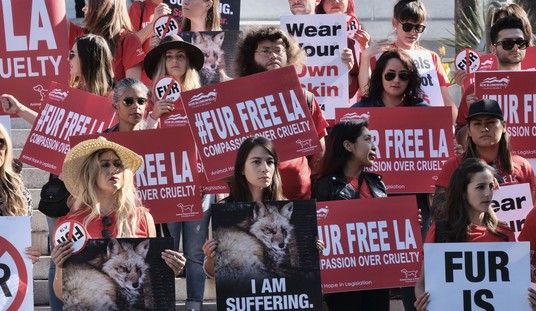Attorney Alan Gura is dragging the District of Columbia into the United States — and my, what a lot of work it is!
The U.S. Supreme Court struck down D.C.’s handgun ban in D.C. v. Heller (2008). There was nothing ambiguous or uncertain about the result: D.C. could not prohibit law-abiding citizens from having a handgun at home for self-defense. Predictably, D.C. government has come up with one bureaucratic obstacle after another to discourage residents from actually doing so.
The latest obstacle was requiring that residents only buy guns that appear on the California Roster of Handguns Certified for Sale. Isn’t California rather far removed from D.C.? D.C., you see, wanted to find a way to limit the number of handguns available to its serfs. The only plausible argument for restrictions would be based on safety — so they adopted an existing state definition of “safe handguns.” There were actually several state standards available to them — and guess what? They picked the state whose list had the fewest models on it. (Yes, California’s Roster has 1,329 different models — but depending on the color of the gun, and the barrel length, you can have a dozen different “models” that are really one gun with either a 5″ barrel or a 4.25″ barrel, in blue, stainless steel, nickel, blue receiver and nickel slide. There aren’t even close to 1,329 different types of handgun offered in California.)
Now, I don’t want anyone buying an unsafe handgun. But the days when handguns were so poorly made that they went off by accident are long past — the result of the Gun Control Act of 1968 and lawyers filing suits against makers of crummy little guns in the 1960s and 1970s. (Hold your breath: I’m admitting that lawyers are sometimes useful.) For example, there are industry standards for dropping a loaded firearm and verifying that it doesn’t go off. But if California had used that standard, nearly all existing handguns would have passed, because handguns are already tested to that standard. Instead, California created its own test, both to drive up the cost and because a manufacturer has to pay for the test. If the manufacturer is out of business (not implausible for some older handguns), there’s no way for that gun to be certified — and therefore, no way to sell it in California. Some of the standards were also designed rather obviously to prohibit inexpensive handguns. Part of California’s effort to disarm a certain class of persons who are a bit too dark for California liberals to trust with firearms.
Trying to limit what types of handguns are available is not a new phenomenon. Georgia passed a ban on small handguns in 1837, which was struck down by the Georgia Supreme Court as a violation of the Second Amendment. After the Civil War, some of the southern states had to confront the same problem as California — dark-skinned people with handguns — and passed laws that prohibited some categories of handguns (the cheapest ones) while leaving the largest and most expensive models alone.
You might be asking, “So you can still buy a handgun in D.C. Who cares if you don’t have a broad selection?” It matters because limiting the supply of available models drives up the price — especially today, when frenzied gun buyers are snapping up guns even in places without restrictions. It also matters because individuals are, well, individual. I used to have a friend with severe arthritis. It took a bit of effort to find a handgun that would fit his gnarled hands and that he could shoot accurately.
So Alan Gura, who successfully sued D.C. over its handgun ban, went back into court to sue them for their attempt at limiting handguns to the California roster. And he won … sort of. D.C. has expanded the list of allowed handguns to include both Maryland and Massachusetts’ roster of safe handguns. This adds another 1,000 models of handguns to the list — expanding choices, and perhaps lowering costs, for residents of D.C.
At some point in the near future, California’s handgun roster law will end up in court. It is extraordinarily clear that the real objective of California’s handgun law was to make handguns expensive and to disarm the poor, in the same way that the Gun Control Act of 1968’s ban on “Saturday Night Specials” tried to stem the rising tide of crime by blacks in America by making guns expensive. (That the victims are overwhelmingly poor — and need to be able to defend themselves from criminals since the police lack the resources to do so — seems to go over the heads of the gun control crowd. Or perhaps they just don’t care.)
Watching Alan Gura do battle with D.C. bureaucracy reminds me just a little of Franz Kafka’s The Trial, where the protagonist finally gives up after a long sequence of hearings which grind him down by their sheer mindless emptiness. Of course Mr.Gura, unlike Kafka’s hero, gets paid to grind back on the D.C. bureaucracy — and one of these days, the D.C. bureaucracy is finally going to give up!









Join the conversation as a VIP Member